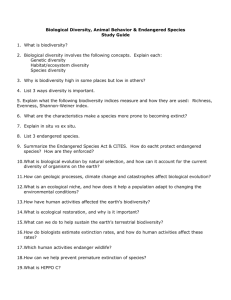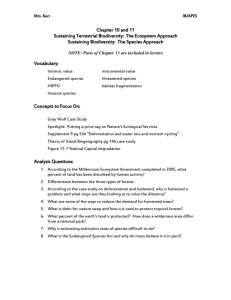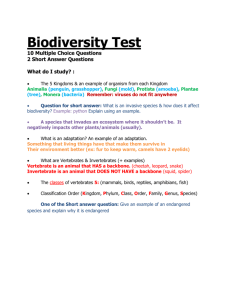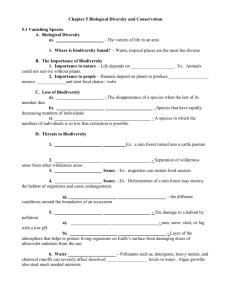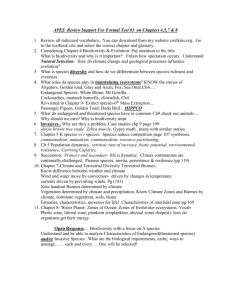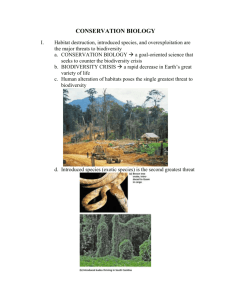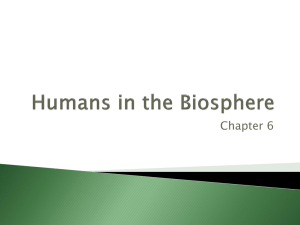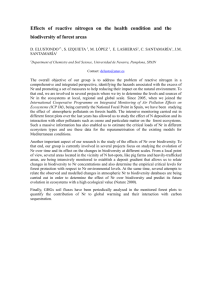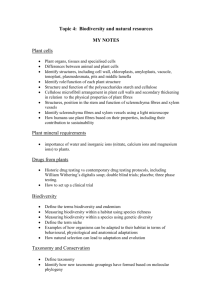Ch10 and 11StudyGuide
advertisement
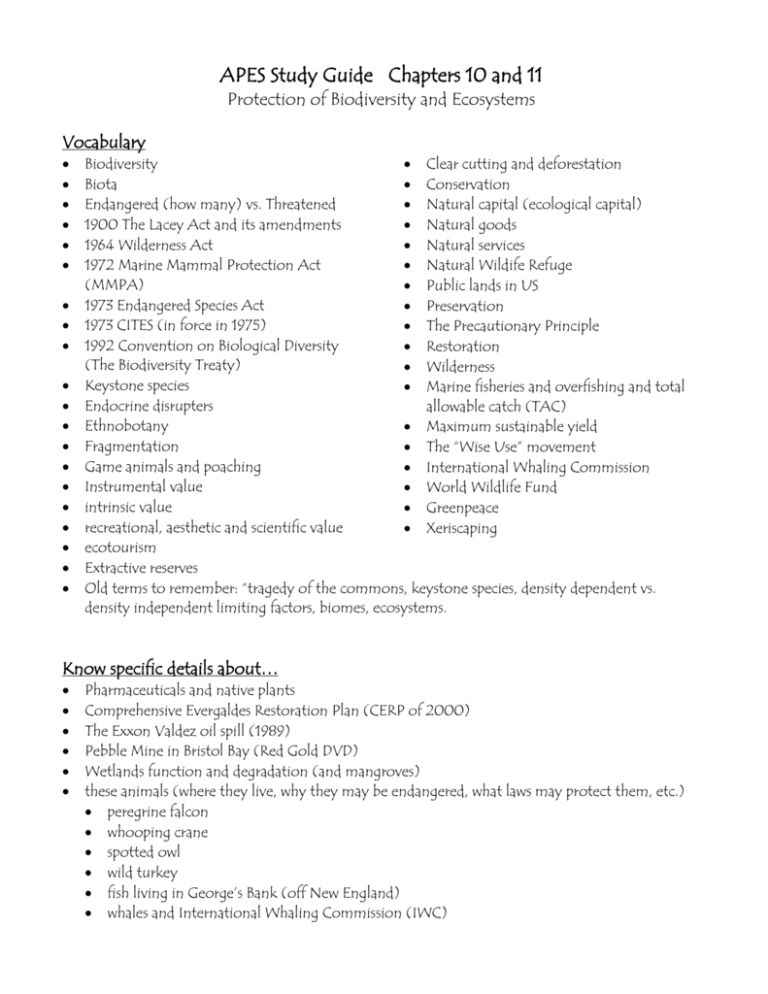
APES Study Guide Chapters 10 and 11 Protection of Biodiversity and Ecosystems Vocabulary Biodiversity Clear cutting and deforestation Biota Conservation Endangered (how many) vs. Threatened Natural capital (ecological capital) 1900 The Lacey Act and its amendments Natural goods 1964 Wilderness Act Natural services 1972 Marine Mammal Protection Act Natural Wildife Refuge (MMPA) Public lands in US 1973 Endangered Species Act Preservation 1973 CITES (in force in 1975) The Precautionary Principle 1992 Convention on Biological Diversity Restoration (The Biodiversity Treaty) Wilderness Keystone species Marine fisheries and overfishing and total Endocrine disrupters allowable catch (TAC) Ethnobotany Maximum sustainable yield Fragmentation The “Wise Use” movement Game animals and poaching International Whaling Commission Instrumental value World Wildlife Fund intrinsic value Greenpeace recreational, aesthetic and scientific value Xeriscaping ecotourism Extractive reserves Old terms to remember: “tragedy of the commons, keystone species, density dependent vs. density independent limiting factors, biomes, ecosystems. Know specific details about… Pharmaceuticals and native plants Comprehensive Evergaldes Restoration Plan (CERP of 2000) The Exxon Valdez oil spill (1989) Pebble Mine in Bristol Bay (Red Gold DVD) Wetlands function and degradation (and mangroves) these animals (where they live, why they may be endangered, what laws may protect them, etc.) peregrine falcon whooping crane spotted owl wild turkey fish living in George’s Bank (off New England) whales and International Whaling Commission (IWC) Practice Questions According to the Millenium Ecosystem Assessment team, what are the 3 main human activities that are causing a decline in biodiversity? What are the consequences of loss in biodiversity? How could a company (legally) develop land that is home to an endangered species? What are four themes to focus on in order to protect biodiversity? What are the most “productive” terrestrial ecosystems? List a few of the services and resources provided by them. What is the extent of deforestation globally? Where and how rapidly is it occurring? What are the negative consequences, especially when doing this to a tropical rain forest? What is meant by “bleaching” of coral reefs? What are the possible causes and consequences? Contrast the different levels of ecosystem protection given to public lands in the United States. What is the tragedy of the commons? Give an example of a commons and how it is mistreated in relation to this chapter.

